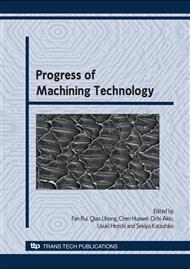p.436
p.440
p.444
p.448
p.452
p.456
p.460
p.465
p.469
Development of Multiscale Simulation System for Nano-Processes
Abstract:
In contrast to microscale method (molecular dynamics) or macroscale method (FEM), multiscale modeling is a new, fast developing and challenging scientific field with contributions from many scientific disciplines in an effort to assure materials simulation across length/time scale. In this paper we propose MPM/MD handshaking method to establish multiscale modeling of thin film formation/nanocutting. First, the detailed handshaking method is presented for large scale simulation along with basic principles of the multiscale approach. Then, quantitative items: flatness, cutting force, adhesion between cluster and substrate, etc. are provided to avoid drawbacks of current qualitative manner. Finally, simulations are carried out to clarify the efficiency of system.
Info:
Periodical:
Pages:
452-455
Citation:
Online since:
February 2009
Authors:
Keywords:
Price:
Сopyright:
© 2009 Trans Tech Publications Ltd. All Rights Reserved
Share:
Citation:


